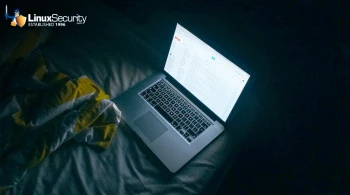Linux admins,
Our regular readers already know that updating their systems with the latest security patches is the front-line defense against most vulnerabilities. Have you checked lately to make sure updates to your system have been applied properly? Have you upgraded before your current version is no longer supported? By mastering these essential functions and understanding why manual updates can be beneficial, Linux admins can better maintain the security and stability of their systems.
Learn more in our LinuxSecurity Quick Reference on updating and upgrading your Linux system.
I'll also explore the power of user savvy and system architecture in protecting Linux users against viruses.
Please share this newsletter with your friends to help them gain critical Linux security insights. Is there a Linux security-related topic you want to cover for our audience? We welcome contributions from passionate, insightful community members like you!
Yours in Open Source,

Dave Wreski
LinuxSecurity Founder
Essential Tips for Updating & Upgrading Your Linux Distro
In this article, I'll guide you through checking installed versions of packages and performing security updates on popular Linux distributions, including Ubuntu, Fedora, Debian, Arch Linux, and openSUSE, thus reducing potential risks that could threaten the security and availability of your systems and your critical data. This is precisely the type of resource I was seeking as a junior sysadmin, and I hope these instructions will help make your Linux administration journey simpler and safer. Let’s get started! |
Linux vs. Viruses: The Power of User Savvy & System Architecture
As a Linux security admin, you've likely spent countless hours fine-tuning your systems' defenses, but here's a reality check: Linux's inherent safety isn't just about firewalls and kernel updates. Often, the savvy users themselves serve as a frontline defense against malware. Unlike their Windows and macOS counterparts, Linux users tend to have a deeper understanding of their operating systems, enabling them to identify and avoid suspicious activity before it becomes a threat. This user knowledge cultivates a proactive approach to security that bridges the gap traditional measures might miss. Moreover, the architecture of Linux itself plays a critical role in its resilience against viruses. With robust permission settings and sandboxing features, Linux ensures the impact is usually contained even if malware slips through. Add to that the complexity introduced by the vast diversity of Linux distributions—each with its nuances—and you've got a landscape that poses significant challenges for malware developers. Combined with Linux's relatively smaller market share and vigilant open-source community, these factors create an environment less hospitable to viruses. This multi-faceted approach to security sets Linux apart and offers peace of mind in your day-to-day operations. Let's examine the various factors that contribute to your security from virus infections as a Linux user. I'll also examine the history of Linux viruses and the ongoing battle to secure our systems against them. While Linux users face comparatively lower risks, we are not immune to the virus threat, and remaining proactive and vigilant is critically important in preventing infections! |













 Applying security updates promptly after they are released is critically important for us Linux admins, as this practice helps protect against vulnerabilities that malicious actors could exploit. Failing to update could expose your Linux systems to cyberattacks, data breaches, and other severe security risks.
Applying security updates promptly after they are released is critically important for us Linux admins, as this practice helps protect against vulnerabilities that malicious actors could exploit. Failing to update could expose your Linux systems to cyberattacks, data breaches, and other severe security risks.
